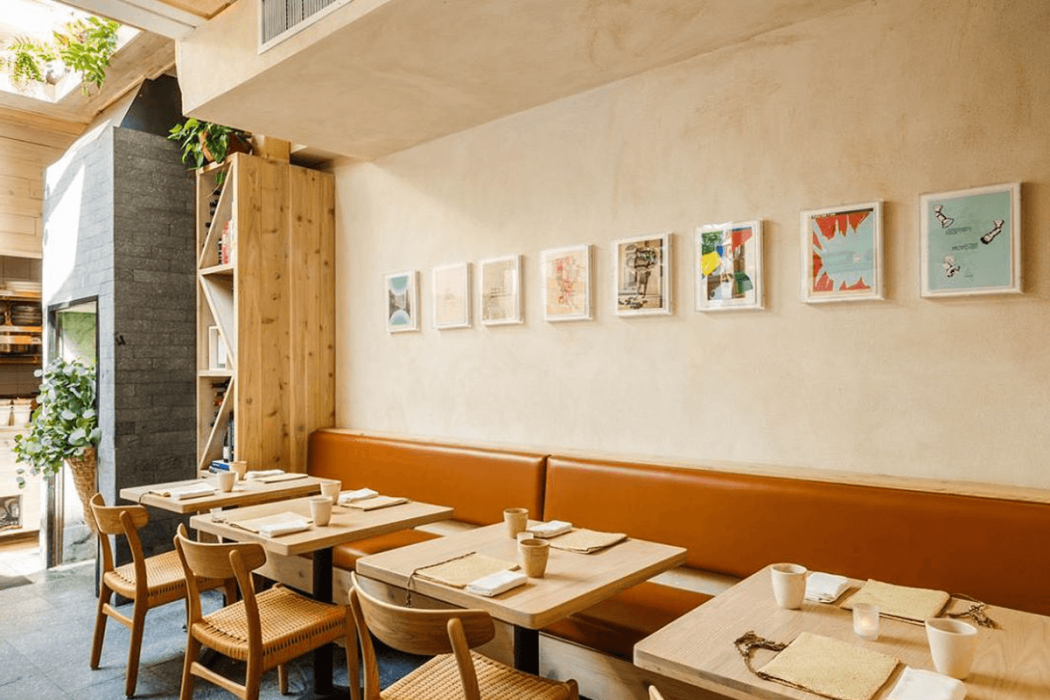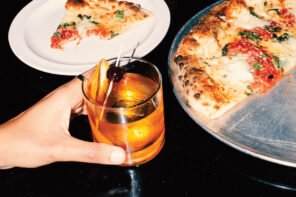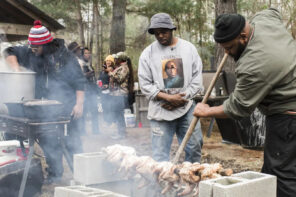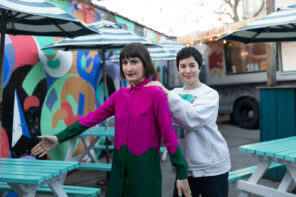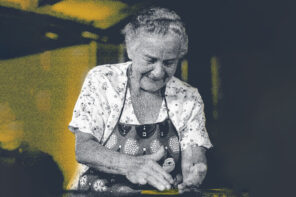Setting the Table with Erik Ramirez and Juan Correa
It’s pretty tough to show New Yorkers something new when it comes to food, but these guys have done it. It all began with Llama Inn, a Peruvian restaurant, not a hotel for llamas (we checked). Branching off and providing New York City with even more varied cultural cuisine, Erik Ramirez and Juan Correa opened Llama San, melding flavors from Peru with those from Japan, a style known as Nikkei. Setting the table with Peruvian flavors prepared with Japanese techniques, Erik and Juan introduced flavors to the NYC dining scene unlike almost else out there. The opening of Llama San occurred only a few months before the pandemic struck the states, causing them to find creative ways to take the Llama San experience of fine-dining and innovative flavor from the dining room and put it in a to-go box.
Oh, and by the way, if anyone is looking to start up a Llama-style restaurant in Montauk, Juan says he thinks “ceviches and the anticuchos and the cold beer and the great rum-based cocktails are perfect for the beach.” So, give the guys a call, because we agree and want to eat that soon.
We sat down with Erik and Juan to find out more about how their experiences shaped one of the more unique cuisines in New York City, Peruvian cuisine past and present, and what to do when you have too many potatoes (spoiler: cover them with a delicious queso-hot pepper sauce).
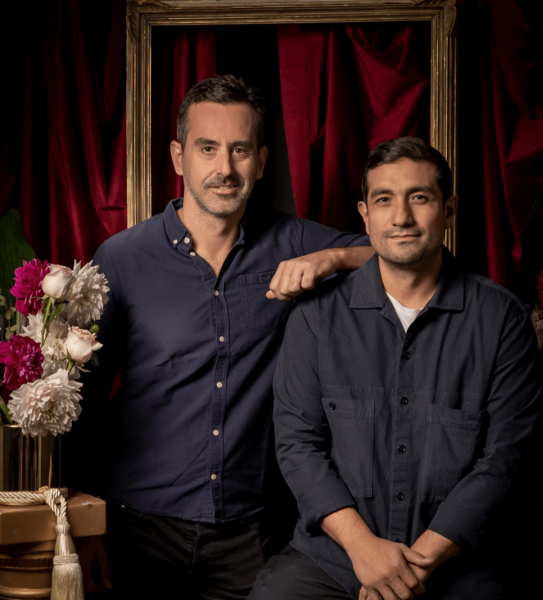
Juan Correa and Erik Ramirez
You’re ordering takeout from your favorite place—what is something you need to make it feel special?
Erik: I have two kids, so making dinner and doing a big thing is a project. So for us it’s kind of whatever comes in the bag, except the napkins. We don’t use paper napkins, we use cloth napkins at home, but that’s really as far as it goes.
Juan: I like using my regular silverware and actually putting my food in a bowl as opposed to eating out of the original container that you get. And I say, to make it special, always a bottle of wine. I’m a big fan of everything from the Canary Islands so I would say I’d open a bottle of Los Bermejos Listan Negro which is a red wine with some carbonic maceration.
Where did the name Llama San originate?
Erik: Our places all have a Llama name to them. We have Llama Inn, then we named the other place in West Village Yamita, which means smaller llama, and then when we started doing this project, it just made sense with the llama. And then Juan just said “Llama San” and it made perfect sense. And we had the logo of Larry in a tux for the Inn and then we threw the rising sun bandana on his forehead to kind of make it a little more Japanese-y. I think that’s how it went. It was an obvious choice.
Juan: Everything is llama-themed and there are some big Japanese populations in Peru and that’s where cuisine originated, way back when. But we always like to play with both languages. So with Llama San, adding the San, we wanted to keep it a little playful. We like the way Japanese people refer to you when they talk to you they say San. Erik San!
Erik: I think it’s a great name.
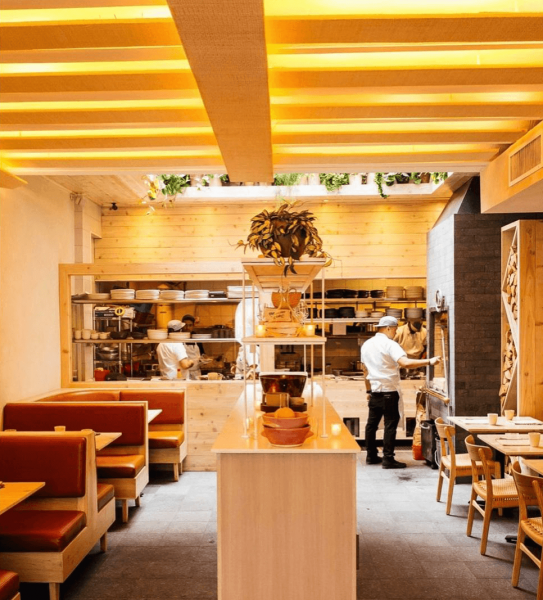
Llama San Interior
What emotions did you go through when you celebrated Llama San’s first birthday?
Erik: It’s funny, I didn’t even know we were coming up on our one-year. Juan mentioned it to me. The way things had been going, my initial thought was alright we made it a year, and when we opened we were riding this great wave and then suddenly it kind of just stopped. I felt like, “Holy shit, it’s been a year already?”
Juan: We were a little numb about it honestly. I mean we would have loved to have a more proper celebration and obviously have a full year under our belt. We were really only open for six months or seven months before the shut down. So that was frustrating because we had so much momentum and there was such a positive reaction to the restaurant. But, that’s life. We just have to keep working at it and hopefully there will be more anniversaries to celebrate.
Favorite Peruvian food to eat when you were growing up?
Erik: For me it’s lomo saltado. Basically, it’s a stir fry, that is soy sauce based. So it’s soy sauce, vinegar, oyster sauce, onions, tomatoes, cilantro, garlic all cooked in a wok, which is where the Chinese influence comes in, served with white rice and served with french fries on top. My dad used to eat with a fried egg and a banana on the side. It’s pretty delicious.
Whenever I used to go visit my grandmother in Peru, she always made us two dishes. One was papa a la huancaína, which is the dish that Juan described. The other was from this food cart that was always on the corner from where she lived where all the kids would go eat. She made what we called salchipapas, which basically is hot dogs and french fries that are fried and put over lettuce, and she would put three sauces on top. I remember that being so delicious when I was a younger kid with my grandmother. There’s a lot of history to Peruvian food, a lot of culture.
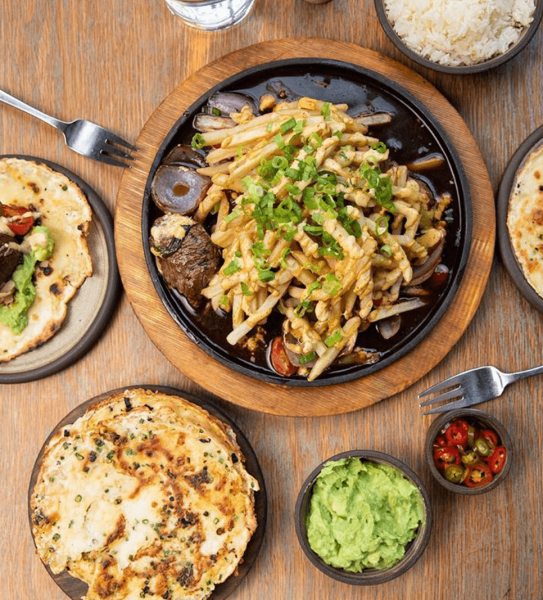
Erik’s Lomo Saltado || Llama Inn
Juan: I’m Peruvian born and bred, but have been in the US 20 years now. I love Peruvian food obviously, that’s part of why we do Peruvian restaurants, but I think it has to be a dish called papa a la huancaína. Peru is like the homeland of potatoes, the variety of potatoes that we have is just outstanding. So you constantly find yourself eating potatoes, potatoes, and more potatoes. So papa a la huancaína is a very simple Peruvian boiled potato and you serve it with a sauce that is made out of Peruvian chiles, called ají, that gets blended with queso fresco, a little bit of salt, pepper, oil, some garlic and some bread crumbs for texture. Then you pour that sauce over the potatoes and you serve it with a boiled egg with an olive. It’s simple and delicious. It’s creamy and it’s spicy. It’s like potatoes with cheese sauce and it’s so kid friendly, which is probably why my mom made it for us everyday. I haven’t had it in a while.
What does sharing your Peruvian culture with New York mean to you?
Erik: I grew up eating Peruvian food, but more traditional, homey stuff, and my grandmother was half Peruvian, half Japanese. I never really knew much about that part of her life, her father was from Japan, and I always thought a good way to learn more about culture was through food. So for me it was important to go down this path and learn more about Nikkei and come up with ideas of how to represent it here in New York and how people can understand it. I’m proud of what we’ve accomplished here and what we’ve done. And to show New Yorkers another facet of Peruvian cuisine is important for us because there’s something that needs to be said. There’s a lot more to it than people think. Because of Llama Inn and Llama San, people are more aware of Peruvian cuisine. It’s looked at differently now in New York City and that’s from us being able to share what we do.
I always thought a good way to learn more about culture was through food.
Erik, what made you want to get into being a chef and choosing to stick with authentic Peruvian cuisine?
Erik: It’s kind of funny. I needed something to do. I kind of came to a point where my mom was like, “You need to figure something out, you gotta get out of here. You’re just going to keep getting in trouble.” This and that. Blah blah. And I’ve always been around good food. I have such fond memories of my grandmother back in Peru, my dad’s mom, she was always cooking. But my biggest influence was my uncle because he lived in Louisiana and every time he came to visit or we went to visit him, everything was always cooking. I think he’s the one that put that bug in me. So when that time came I was like you know what, “I want to go to school for cooking.” I just really enjoyed it and I became actually pretty good at it. When I was younger I didn’t always know I wanted to be a chef, it was in my later teen years when I decided to give it a shot. Then I moved to Philly and started cooking there.
I’m first-generation American and both my parents are Peruvian and when I started cooking I never really thought of cooking the food I grew up eating until I had this ah-ha moment in my late twenties. I felt like Peruvian cuisine needed a fresh perspective. It needed to be freshened up a little bit so that’s why we went the direction we did with Llama Inn. For me, it’s getting a little more in tune with my roots and my heritage and that’s why I’m cooking Peruvian food. I identify myself as Peruvian.
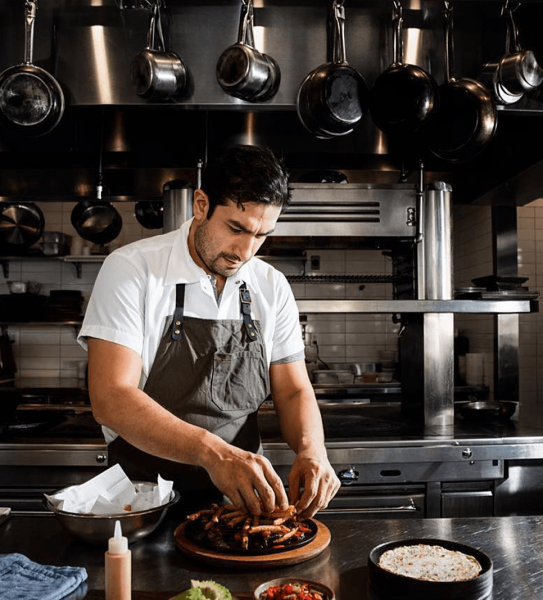
Chef Erik Ramirez
Favorite style of food to eat that’s not Peruvian?
Juan: Easy. Indian and then throw me any Southeast Asian food. Vietnamese, Malaysian, Thai. I could eat that everyday. I particularly love Uncle Boons, Thai Diner and Kopitiam.
Erik: Yeah, I’m going to have to go with Southeast Asian as well. Curries and stuff that you eat with rice. And I’m a sucker for pizza. A good square slice.
The emphasis of the importance of helping the Llama San staff during this time has been moving to see. How did you guys come up with the idea for the Staff Pantry and auction?
Juan: When we were forced to close on March 15, I think the first thing that came to mind was our staff. How are they going to pay bills? We’re going to have to furlough people. We’re going to be closed. And we know everyone lives paycheck to paycheck so how would they make ends meet? So we were sitting on a rather large inventory of food and in addition to that we said, “Well let’s put some money and buy groceries and buy from our suppliers at discounts that others wouldn’t be able to get in a regular store.” So we made it a program, so that every week over the next several weeks, people will have access to come to the restaurant, pick up basic pantry things and not spend their very limited money on those things. I think that was number one and I think that was quite successful.
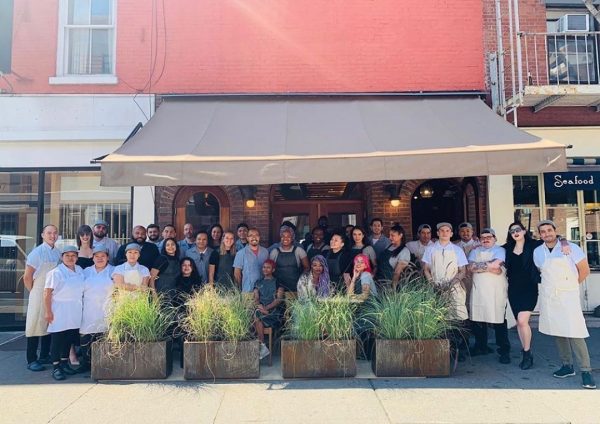
Llama San Staff
The second part is, we know that this is a very immigrant heavy industry, and we know that many of them were not going to be able to collect unemployment. So to us, it was important that they have paychecks because we really had no clarity at that time as to how long the shutdown would be or how long it was going to be until we could offer them their jobs back. We saw a lot of people were doing fundraisers asking people for money, and we always have the impression that there is a little bit of exhaustion around that. There’s only so much money you can ask people for and there are a lot of people asking for money at this time. So we said, “Well let’s give something in exchange.” And the things that we can do to give in exchange are mostly collective talent, so we were saying we’ll come cook at your house, we’ll teach you this recipe. I think it was remarkable, the level of generosity we found from people. We were able to support our staff members with a relatively good-sized check for more than 6–7 weeks or so until we were slowly able to to begin to bring some people back in to start doing some takeout and delivery.
Have you guys been able to do any of those cooking classes yet?
Juan: Yeah, we sold a lot, but unfortunately some people are still very apprehensive about being in person with others, so I think a few of the generous people that bought the classes have not cashed in yet. And obviously, on our end those are an open-ended offer with no expiration date.
What other efforts do you plan to take to keep up the momentum of supporting the staff and bringing Llama San back fully?
Juan: I think right now it’s keeping them employed. We’re working really hard to make sure we have a business. And right now we’re obviously not giving employment to as many people as we would like. Certainly way below the pre-Covid levels. What we hope is that we can exit this and return back to staffing levels that we had before and everyone can have a job. And it’s hard work. We are working seven days a week to make sure that everything works.
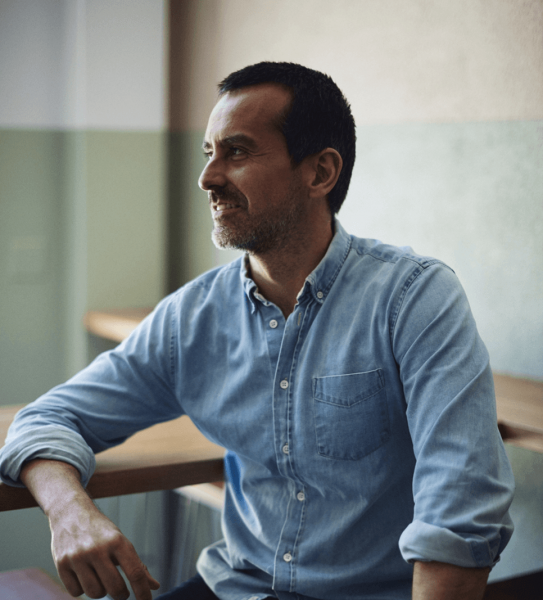
Juan Correa
What is something positive you can take away from the changes you’ve had to make in the midst of the pandemic?
Erik: From the kitchen perspective, how to work more efficiently and how to do more with less, to be honest. Being crafty and figuring out ways to preserve whatever the restaurants do have until things are kind of normalized. You kind of look at things differently and approach things a little differently without trying to spread everybody too thin and while keeping a good working environment and atmosphere.
Juan: I 100% agree. To everyone that survives this, or even if you don’t survive, we’re all going to become better managers as a result of it. It’s relatively easy to manage a business when things are going well, but managing through a crisis that is just so deep and so uncertain is focusing us tremendously. And I think that’s the only plus, because otherwise it’s pure misery.
It just brings a renewed appreciation for everything that your team does and how hard they work. We are working under circumstances we should not be working under, and Erik and I make the point of working along with our team so it is very clear that we’re not asking them to do anything that we wouldn’t do.
Erik: It’s a little fucked up because it’s kind of like these things need to happen to put things into perspective, and then you realize the efforts that your team is making, the hours they are putting in and the work they are doing. There’s so much more of an appreciation for that. And like Juan said, to lead by example and show that we’re there with them and we work side by side. I think that’s another thing that I have realized. Not that I hadn’t realized it before because teamwork makes the dream work, but being in this situation, we have to work with what we have and everybody is putting a lot of work and effort into it and nobody’s complaining about it.
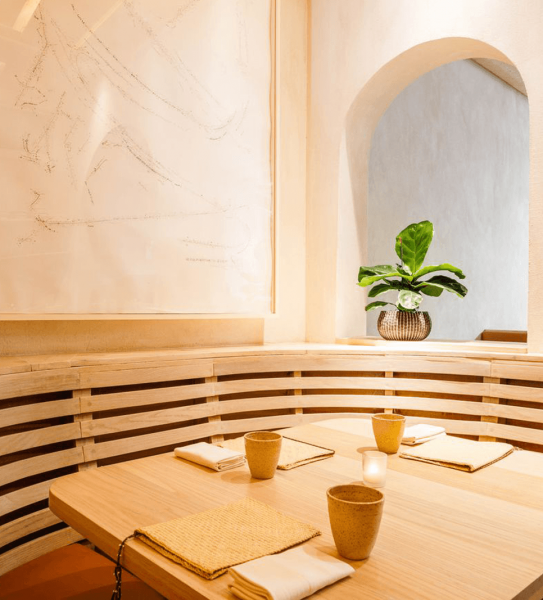
Llama San Interior
One thing you can’t eat a meal without?
Erik: I have a sweet tooth. For me, to have a well-rounded full experience from start to finish I always need something sweet at the end. I need to have a dessert just to see the perspective of the chef when it comes to sweets. And then as a kid, growing up in a Latin household, it was rice. Growing up I ate everything with rice. Even if we had pasta with tomato sauce we would also have rice.
What’s your go-to at Llama San, maybe after a long day?
Erik: That is a hard one. If I had to choose two, they would be the aged duck breast nigiri Ibérico pork tonkatsu with udon noodles in a Genovese style pesto and the scallop and chirimoya ceviche.
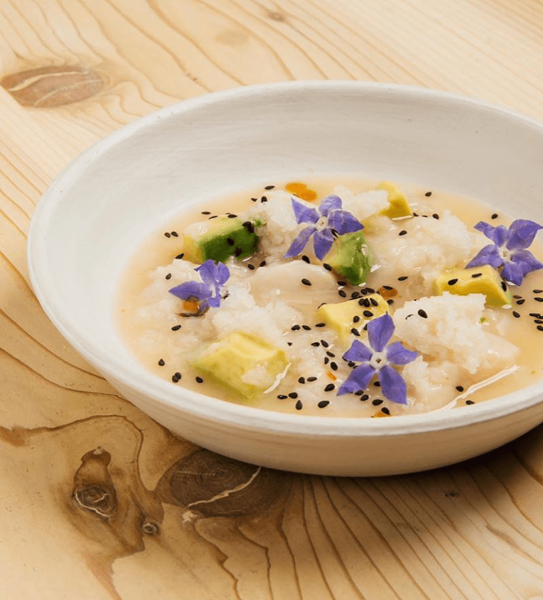
Scallop, Chirimoya, Avocado, Sesame
Ceviche || Llama San
Who’s inspiring you in the restaurant or culinary world right now?
Erik: I draw a lot of inspiration from chefs in Peru. I just recently purchased the book from this chef José del Castillo. He has a couple restaurants in Peru and I absolutely love his cooking. It’s very simple, straightforward and keeps Peruvian culinary tradition. Looking through his recipes and reading the little notes to the recipes keep me inspired.
Juan: We’re biased, we think our food is the most delicious and I see what a couple of chefs in Peru do and I think it’s really interesting. I had the chance to eat at this restaurant last February when I went to Lima. The name of it is Mérito, and it is actually a Venezuelan guy that has cooked in Peru for a long time. I was amazed at how playful and delicious his food was. Technically perfect and just pushing Peruvian cuisine with Venezuelan influence and I just thought it was really amazing. One big part of Peruvian food is the complexity of flavors and the strength of the flavor. So seeing what this guy did with the precision of technique I was very inspired by what he was doing.

